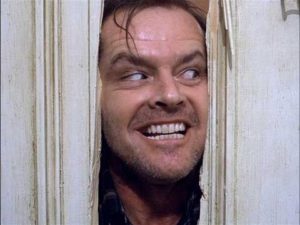My first full time employment was making corporate videos, before moving to a TV network five years later. I then chose to leave the broadcast production industry, during a time of change where television networks were being ‘streamlined’. My work life began with the idyll that I would tell stories through the use of film. I left because I wanted to make stories but the corporation wanted to make money.
Quality was abandoned and, only a few years ago, so was the historic building that I had worked from.
Jump forward to now and what a change. While TV appears in decent shape, with quality programming being driven by the BBC and, surprisingly, Netflix and Amazon Prime, corporate video use is surging too. And I’m excited to be again working on videos for marketing use (like this sizzle reel).

Located in Alton, Hampshire, Paul Cranston is Headway Marketing’s Client Services Director. Paul began his career producing corporate videos with what is now Focus Business Communications before working with ITV franchisee, Meridian Television.
This post is not a comment on whether you *should* produce video content to suport your marketing activities, but on how. Or rather, what are the critical elements that make a video good. And you know what, I think that they are the same now as they were when I studied film production at film school.
Classic Elements of Great Films
The first three components of great films which I think link very closely to the production of corporate videos are:
Script, Character and Acting.
Scripts
Scripts are not easy to write. There is a tendency to over write content and use words to compensate for something else. When the audio and visual elements of video work well together, the impact of the script can be made greater by using fewer words. An example might be the scene in The Elephant Man where John Merrick is being hounded through the station, quickly a mob forms. In a scene of a couple of minutes the only spoken words are the phrases “Why is your head so big?”,”Stop him!” and most notably “I am not an animal. I am a human being!”.
See the clip from David Lynch’s The Elephant Man (1980).
Used well, the select use of words can be powerful.
Character
Characters are a valuable part of both films and, bringing back on topic, corporate films. Why? People seek to relate to people and they buy from people. It was a smart move for James Dyson to feature in his ads. They told the story of an enterprising British Engineer frustrated with the way that we are made to do things. His aim remains to make our chores easier than before through great tech. It shouldn’t be a surprise that up and coming brand GTech is following suit with Nick Grey (Grey Technology >> GTech) appearing in his ads. Characters are the opportunity for the audience to empathise and engage. In commercial videos, we want to see someone like us feature so that we can better connect with the brand.
Acting
The ability to act should be a prerequisite for films… hmmm. In corporate videos the on screen ability of the presenter is of equal importance. Simple techniques like being able to speak clearly, holding eye-contact with the camera or even being able to talk and move at the same time do make the person more alive. And more real!

When Script, Character and Acting are brought together well, certainly in film terms, you end up with something special. Think of any quote (if it helps, perhaps one that is regurgitated into a meme): “One does not simply walk in to Mordor…”, “Do or do not, there is no try” or “Here’s Johnny!” – you can’t help but but say these phrases without imitating the voices or picturing the axe wielding Nicholson. Collide quality acting and characterisation and take a few words and you can turn them in to near legendary lines.
In an upcoming blog we’ll look at three other elements that make videos great – timing, sound and visuals and consider in what way they are relevant to the production of corporate videos and to Marketing Strategy.
